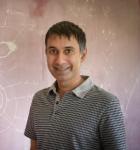
Mukund Thattai |
Mukund’s lab studies Mukund’s lab studies the dynamic endomembrane organelles of eukaryotic cells, and the network of vesicles that traffic cargo between them. The broad aim is to understand how local molecular interactions generate the global membrane traffic network. The lab combines eukaryotic genomics, mathematical models, and cell-biological experiments to address these issues. They develop rigorous tools to convert cell-biological hypotheses into mathematical models, in collaboration with computer scientists. These models give rise to precise predictions in terms of specific molecules and phenotypes, which are finally tested in collaboration with experimental cell biologists. |
|
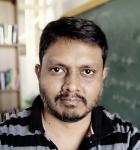
Vijaykumar Krishnamurthy |
The primary interest The primary interest of Vijay’s lab is to understand the fundamental physical principles of morphogenesis in living systems, through the lens of classical statistical physics and soft condensed matter physics. Specifically, the lab explores connections between biochemical signalling, active mechanics and the geometry of shape in various biological phenomena. The lab is particularly fascinated by embryonic development and the role of mechanical forces and deformations/flows in these morphogenetic processes. |
|
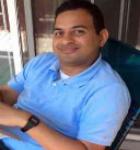
Shashi Thutupalli |
Shashi’s lab is broa Shashi’s lab is broadly interested in the dynamics and organisation of complex systems far from equilibrium. The approach is to recreate in the laboratory, the emergence of specific and observable processes of living systems to shed light on early evolution, the transitions therein and to understand the mechano-chemical fabric underlying the living state. The lab is specifically interested in (i) probing the mechano-chemical properties of single molecules and cells to the collective dynamics of spreading/expanding microbial populations and multi-species ecologies (ii) developing simple physico-chemical systems that display the emergent dynamics of living processes -- these include studies on synthetic self-replication and origin of life scenarios and the design of de-novo (colloidal) building blocks capable of assembly, replication and metabolism. |
|
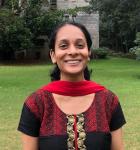
Shruthi Viswanath |
Shruthi’s lab seeks Shruthi’s lab seeks to understand protein organisation in cells by characterising their structures in binary complexes, macromolecular assemblies, and nanoscale architectures. These structures provide insight into how molecular machines function, how they evolved, how they assemble, and how they are regulated. Structures of large assemblies are usually difficult to obtain using any single experimental method. Therefore, the lab uses an integrative approach, combining various sources of available experimental data along with statistical inference for structure determination. The other focus in the lab is to develop rigorous methods and software for computational modelling of protein organisation at the above scales, inspired by algorithms from the fields of statistical physics, machine learning and statistical inference, optimization, computer vision, and graph theory. |
|

Shaon Chakrabarti |
The primary interest The primary interest of Shaon’s lab is to study two biological oscillators – the cell cycle and the circadian clock, and to uncover the fundamental principles behind how they interact in health and disease. The lab studies how fluctuations in various single cell components give rise to emergent dynamics of the two oscillators, controlling critical phenomena like cell proliferation and time-keeping in organisms. To answer these questions, Shaon’s lab uses a variety of live and fixed cell microscopy techniques on the experimental end, and theoretical approaches drawn from (non) equilibrium statistical physics, biostatistics and machine learning. Ultimately the lab’s goal is to develop theoretical and computational approaches that can be translated to clinical applications, in a “board-to-bench-to-bedside” research program. |
|
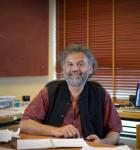
Madan Rao |
Madan’s lab explores Madan’s lab explores physical and chemical principles underlying biological organisation across scales, from functional biomolecules, subcellular organelles, to the cellular and tissue scale. At these scales, organisation is often driven by mechanisms fuelled by energy, for example the coupled dynamics of the cytoskeleton, motors and regulatory proteins. Such actively driven organisation often enables efficient processing of information, computation and control - tasks that self-organised living machines have evolved to perform. The lab has been engaged in developing a theoretical framework, called active hydrodynamics, to address situations where activity plays a significant role. Using this framework, Madan’s lab studies the mechanical response, pattern formation, symmetry breaking, hydrodynamic instabilities and information flows in both in-vivo and in-vitro reconstituted active systems. |
|
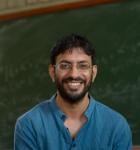
Sandeep Krishna |
Research in Sandeep’ Research in Sandeep’s lab lies at the interface of biology and physics, examining complex, far-from-equilibrium dynamics of biological systems, ranging from molecules to cells to populations. At the molecular level, the lab uses a combination of experimental data and mathematical models to study the dynamics of different mechanisms of protein regulation and their roles in feedback loops. At the cellular level, the lab studies oscillatory behaviour, synchronisation, and entrainment in signalling pathways. Finally, at an ecosystem level, the lab is studying microbial communities to understand issues related to the spontaneous emergence of heterogeneity in isogenic populations, and the long-term coexistence and coevolution of multiple species |
|
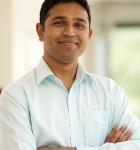
Tapomoy Bhattacharjee |
Tapomoy is formally Tapomoy is formally trained as a chemical engineer and a mechanical engineer. His research interest is rooted in understanding the physics of active living matter and bioengineering. His current lab members are trained in physics, biology, and biotechnology. Tapomoy’s lab aims to discover new physical and biological principles emerging from the interactions between mammalian cells, bacteria, and their microenvironments. The lab uses bioprinting and a variety of microscopy techniques to probe multicellular systems at three-dimensional biological interfaces that mimic the natural habitats of mammalian cells and bacteria. More specifically, the lab is exploring a spectrum of interesting areas that include characterizing the properties of biomimetic gels, understanding worm behavior in granular environment, exploring bacterial growth and response to antibiotics in 3D, designing long-term cultures of 3D-printed tissues, studying the interaction between microbes and mammalian tissues in 3D, and investigating mechanically assisted maturation of tissues. |
|
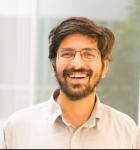
Archishman Raju |
Archishman’s lab is Archishman’s lab is broadly interested in coarse graining and simplified emergent descriptions of complex phenomena, with a particular focus on theoretical modelling of cell fate specification during development. The modelling of cell fate decisions in biology is often done using gene regulatory models, which try to model the detailed interactions of known genetic components. The lab is working on an alternative proposal which mathematically formalises the geometry of the ‘Waddington landscape’. Waddington’s landscape has consequences not simply for development but also for evolution, where the landscape would allow for ‘genetic assimilation’ and faster evolution. Archishman’s lab is also working on formalising this idea and testing if it can be differentiated from traditional population genetics models. |
|
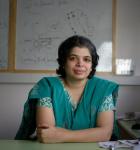
Shachi Gosavi |
Shachi’s lab uses co Shachi’s lab uses computational methods to understand the architecture of proteins, to be able to both predict and engineer their function. The lab is specifically interested in understanding how protein function and conformational dynamics affect the folding of proteins and how folding simulations can, by themselves, impart information on protein function. To achieve this, the lab develops and uses Structure Based Models (SBMs) which ignore non-native interactions by encoding only the folded structure of the protein into the energy function. This energy function can then be used to perform molecular dynamics (MD) simulations.Using these techniques, Shachi’s lab is also interested in predicting and then experimentally designing protein assemblies. |
|
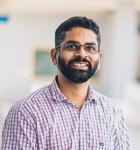
Vishal Vasan |
Vishal is a mathemat Vishal is a mathematician with an interest in partial differential equations, inverse problems and computation, working on problems arising in engineering, biology and physics. He has a specific interest in the application of control-theoretic ideas to investigate pattern-formation and regulation in biological tissues. He is particularly excited about building new mathematical tools specifically motivated by questions in biology. |
|
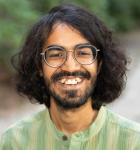
Akshit Goyal |
Akshit is interested Akshit is interested in the collective dynamics of evolving ecosystems. From the maintenance of biodiversity to self-organized energy flows, several phenomena in ecosystems emerge from interactions between many species. However, unlike traditional many-body systems in physics, each species in an ecosystem tunes its parameters in response to its environment during evolution, which constantly reorganizes the entire system. To understand the principles behind these complex systems, we need new theoretical and computational tools. Akshit's group uses concepts from dynamical systems, nonequilibrium statistical physics, data assimilation, and information theory to develop these tools, test their predictions against data, and better understand evolving ecosystems. |
|
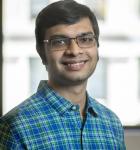
Brato Chakrabarti |
Brato's interest is Brato's interest is driven by the curiosity to understand various fundamental fluid-structure interaction problems at the interface of hydrodynamics at micron scales, transport phenomena, soft and active matter, and biological physics. In all these problems, complexity emerges from multiscale (nanometers to millimeters) and multiphysics (hydrodynamic, elastic, and chemical) phenomena. The lab develops analytical and computational techniques to shed light on these questions and collaborate closely with experimentalists. The problems of interest typically include developing theories for synchronization physics in ciliary carpets, modeling emergent dynamics in fruit-fly assemblies, and intracellular flows, and understanding nonlinear dynamics of biopolymers in simple flows. |
|
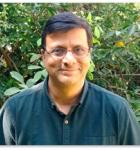
Sanjay P Sane |
Sanjay's lab investi Sanjay's lab investigates the mechanics, neurobiology and ecophysiology of insect flight, which is interesting for several reasons. First, flight is a key contributor to the evolutionary success of insects, enabling them to avoid predators, catch prey, access distant habitats etc. Second, the insect sensorimotor system encodes, processes, and responds to ambient sensory stimuli at extremely rapid rates. Third, the brain and body collaboratively generate movements, requiring knowledge of structure and biomechanics of insect exoskeleton and underlying musculature. This study is interdisciplinary, and ranges from aerodynamic force/torque generation and bilateral neural control during complex aerial maneuvers. Additionally, his lab also studies insect architecture - specifically how termites collectively build huge mounds. To study this phenomenon, his lab develops assays which allow him to study a range of questions such as traffic control, communication with nestmates using chemical pheromones, transport of water for construction and models of emergent behaviour from individual actions. |
|
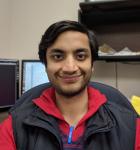
Sarthak Chandra |
Sarthak is broadly i Sarthak is broadly interested in understanding the interplay between structure and function in neural circuits, particularly from the perspective of development. His work lies at the interface of theoretical and computational neuroscience, nonlinear dynamics and machine learning. Central questions of his interest are understanding how the underlying nonlinear dynamics of developing neural systems lead to the formation of structured circuits, and how can natural and artificial circuits leverage these structures for computation. |
|
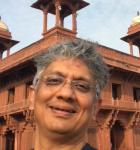
Siva Athreya |
Siva Athreya’s resea Siva Athreya’s research has focussed on processes on networks and models from statistical physics. Specifically he has been working on questions that address long time behaviour of moving polymer in trap models, co-evolution in network models and constructing gradient flows on large networks. He also works on disease modelling for livestock and infectious diseases, e.g. Dengue and new variants of COVID-19. |